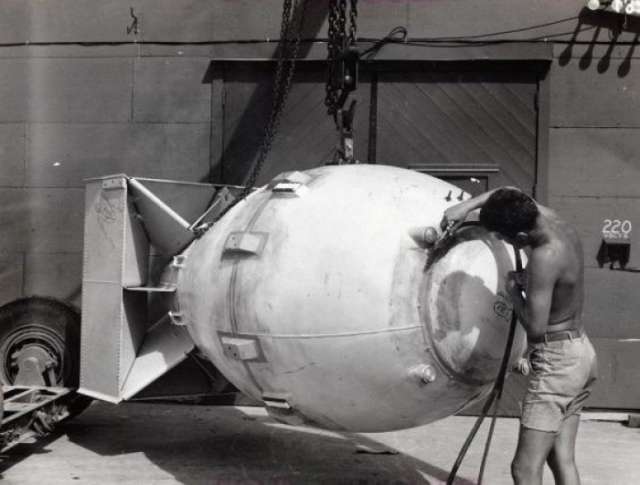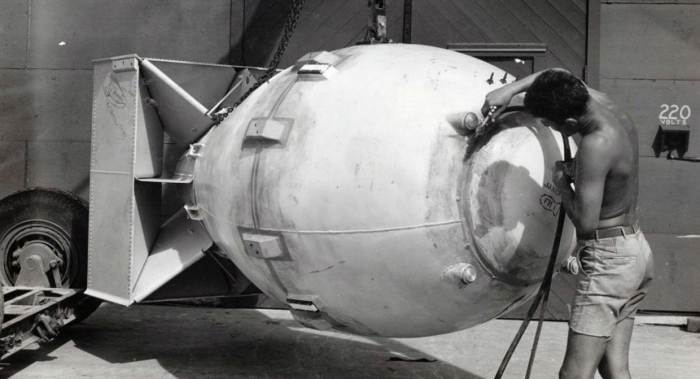Days later on 9 August the 'Fat Man' atomic bomb was dropped on Nagasaki.
According to University of California, Los Angeles, the estimated death toll by December of that year, due to the blasts and subsequent radiation, was at least 150,000 in Hiroshima and 75,000 in Nagasaki, but the university even calls these figures conservative.
Photos from the US National archives, published on Alternative Wars, reveal the preparation that went into the first use of nuclear weapons by the United States.
The declassified images are purportedly from the RG-77-BT collection in the still photo collection of the National Archives II building in College Park, Maryland.
Soldiers check the casing on the 'Fat Man' bomb on Tinian Island, in the North Pacific Ocean.

Tests (minus the detonators and payloads) were carried out on the island ahead of dropping the bomb.
The number L-11 is painted onto the side of Little Boy - the unit dropped on Nagasaki.

Putty and a sealant are applied to the Fat Man in order to seal its casing.

Workers at the assembly plant sign their names and leave other messages on the bomb.

'A second kiss for Hirohito' - A signed note from Rear Admiral Purnell to the Japanese Emperor

The Fat Man is lowered into a pit, to dock with Bockscar, the B-29 bomber plane that would deliver the bomb

The aircraft backs over the pit, and takes on the bomb load.

Once inside the plane, the device attached to sway brackets that will secure it within the aircraft.

It's been 72 years since the weapons of mass destruction were dropped on Japan by the United States.
Japan's Prime Minister, Shinzō Abe, called for a "a world free of nuclear weapons" at a ceremony to mark the bombings.
In the same week, US intelligence analysts announced that they suspected North Korea had successfully miniaturised a nuclear weapon, allowing it to be placed in a missile or bomb. While US President Donald Trump promised "fire and fury".
We have learned nothing.
More about: #TOPSECRETm#atomicbomb
















































